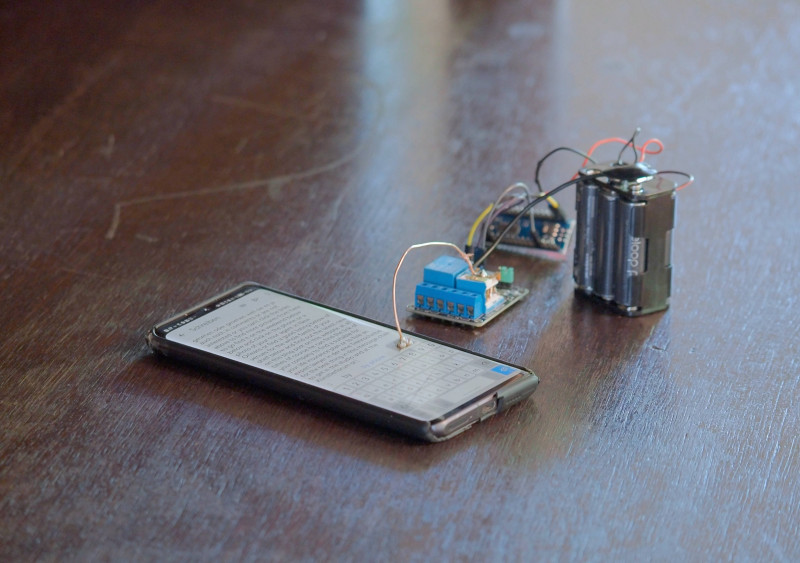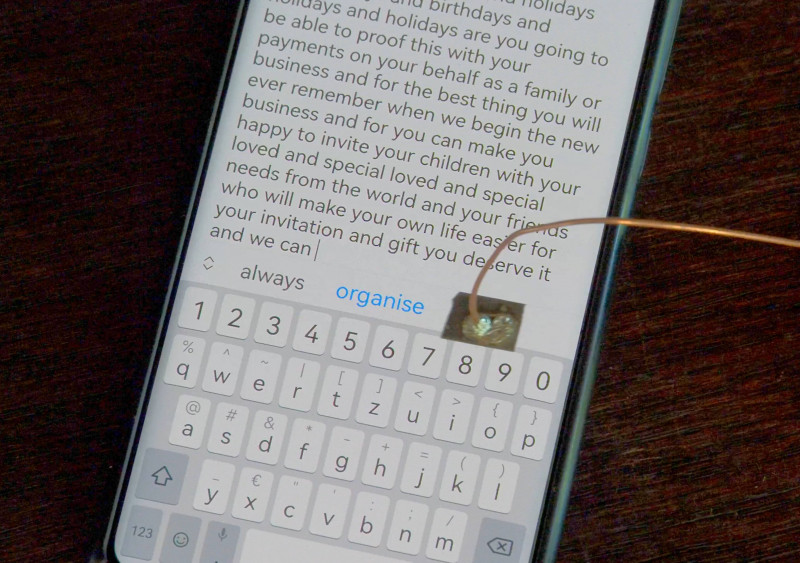

Reset (2022)
mobile phone of the artist, in-built autocorrect algorithm, relay, copper wire, microcontroller, battery
(Exhibition view: Leerlauf)
Smartphones come with built-in algorithms for text prediction. Several programs exist to serve this function—each slightly different in how it predicts what we want to say. The one I use is called SwiftKey. It is a neural network trained over years on data from more than a billion users worldwide. Its task is to predict the next word I intend to write. The system analyzes everything I’ve written on my phone: emails, memos, private chats, calendar entries, and social media posts. The more I write, the more precisely it begins to reflect my linguistic habits. It functions like a digital subconscious—a place where language accumulates, gets fragmented, and reassembled into something uncannily familiar.
Reset is a machine that intervenes in this system. Every second, a statically charged lever taps the autocorrect button on my phone. This electrical mechanism forces the algorithm to respond to itself. Word by word, it generates a continuous chain of associations. The longer the machine runs, the more the algorithm loops back into its own logic—overwriting personal nuance with statistical generality. In doing so, it gradually returns to its baseline state: a synthetic cross-section of collective language. A voice shared by over a billion users. One that is circling around wedding gifts, business opportunities, family, and friends.